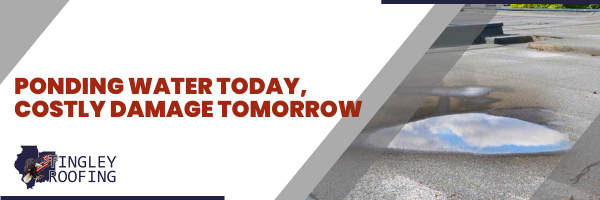Flat roofs offer a clean, modern look and are often the go-to choice for commercial buildings. However, one common issue they face is ponding water after heavy rain. If water remains on a roof for an extended period without draining, it can lead to major problems. From leaks to structural damage, ponding water is something that should never be ignored.
So, how can you prevent ponding water on flat roofs? The answer lies in a combination of regular maintenance, smart design, and upgraded drainage systems.
Why Ponding Water Is a Problem
When water collects on a flat roof, it adds extra weight and increases the risk of leaks. Over time, this can damage the roof membrane and shorten the lifespan of the entire system. Left unaddressed, standing water can lead to costly repairs and structural issues.
Regular Inspections Matter
One of the best ways to prevent ponding water on flat roofs is by performing regular inspections. After a storm or heavy rain, take time to check for areas where water might be collecting. Look for:
- Low spots or sagging areas
- Clogged or slow-draining gutters
- Debris near drains or scuppers
- Signs of blistering or membrane damage
Early detection makes repairs easier and more affordable. Small issues can often be fixed before they lead to major water damage.
Upgrade Your Drainage System
Many flat roofs suffer from outdated or inadequate drainage systems. If water isn’t moving off the roof quickly, it’s time to consider an upgrade. Improving drainage is one of the most effective ways to prevent ponding water on flat roofs.
Here are some options to explore:
- Add additional drains to help spread out the water flow
- Install tapered insulation to promote water movement toward drains
- Use scuppers and downspouts that can handle more volume
- Inspect interior drains to ensure they’re clear and functioning well
A properly designed drainage system can significantly reduce standing water and the risk of future problems.
Keep the Roof Clean
Leaves, dirt, and debris can easily block drains and gutters. A blocked drainage system won’t work as intended, especially during a storm. Make it a habit to:
- Remove debris after every major weather event
- Check drain covers and clear any clogs
- Schedule professional cleanings at least twice a year
Clean roofs shed water faster. This simple maintenance step can go a long way in helping prevent ponding water on flat roofs.
Watch for Structural Issues
Sometimes ponding occurs because the roof is no longer level. Over time, age and settling can create dips that collect water. If your building is older or you’ve noticed consistent standing water in the same spots, consider having a professional assess the slope of your roof.
In some cases, the solution might involve:
- Re-pitching the roof
- Adding tapered insulation
- Reinforcing roof support beneath the problem area
While structural fixes can be more involved, they offer long-term protection and help prevent ongoing water damage.
Protect Your Flat Roof from Future Storms
Taking steps now to prevent ponding water on flat roofs will save time, money, and stress down the line. From upgrading your drainage system to scheduling regular inspections, prevention is always more cost-effective than repairs.
Ready to take the next step? Reach out today to schedule a roof evaluation or learn more about drainage system upgrades. Your roof will thank you the next time the rain starts to fall.


Recent Comments